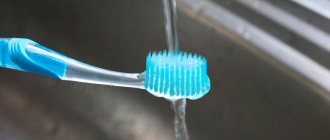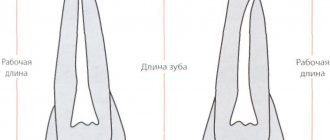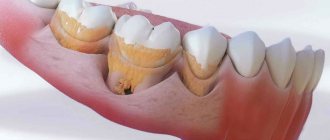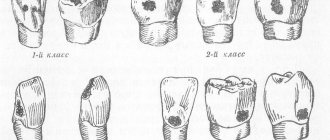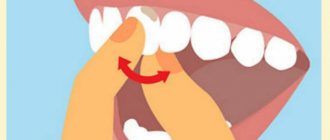Since the punishment and application of the provisions of the relevant article depend on the severity of the consequences received during beatings, it is necessary to accurately determine the severity of the injuries received.
Fractures of the upper and lower jaws are quite common in medical practice. According to statistics, they make up 1/7 of the total number of fractures. This type of injury is more common in young men than in women.
The article provides details of the legal consequences for the offender who caused a fracture of the victim’s jaw.
What is the severity level?
Head injuries can lead not only to damage to the victim’s health, but also create a risk situation for his life. Here are located the muscles, joints and bones of the jaws, directly connected with the digestive tract system, as well as with the speech organs, which are actively involved in a person’s full social life.
Therefore, injury to the maxillary region of the face causes a double blow:
- Deprives the victim of the ability to fully eat food and maintain the natural nutrition of the body.
- A person is not able to pronounce articulate sounds, which means he is unable to communicate verbally with the surrounding context for a long time.
Providing standards for determining the health status of an injured citizen is based on special Rules approved by the Order of the Ministry of Health and Social Development dated April 24, 2008. According to the Rules, medical criteria for injuries are approved and reflected in a special Appendix to the designated Order.
According to the conclusions obtained during the expert's examination, the severity of the injury is established. If the jaw area of the face is injured during beating, the severity of the consequences is determined to be medium .
That is, over a long period of time, the victim’s body is capable of recovery.
If the violations turn out to be reversible, Article 112 of the Criminal Code of the Russian Federation comes into force, reflecting the norms of liability for damage to health of moderate severity.
However, such violations may be multiple, since the jaw mechanism is quite fragile. When struck with a blunt object, parts of the jaw can break off and subsequently be artificially implanted.
With subsequent restoration, certain functions may be irretrievably lost:
- chewing;
- speech
This creates a significant complication for the situation not only of the injured person, but also of the attacker, whose punishment is already considered in the context of the provisions of Article 111 of the Criminal Code of the Russian Federation - grievous harm to health.
Many organs, including hearing and vision, may be completely or partially unrecoverable if a fracture of the jaw bone damages the hearing organ or the optic nerve. For example, when crushed by a heavy object or a gunshot wound. In addition, there are cases when, from a strong blow, a broken jaw bone penetrates the throat with a sharp edge, which can not only cause harm to health, but also create a threat to life or lead to death.
The provisions of Articles 111 and 112 of the Criminal Code of the Russian Federation come into force only if the strikes are intentional, leading to injury. For intentional beating with consequences in the form of a broken jaw, if they were defined as serious or moderate injuries, liability begins at the age of 14 according to Article 20 of the Criminal Code of the Russian Federation.
Rehabilitation after maxillofacial surgery
Table of contents
- When operations are required
- Indications for operations
- Preparing for surgery
- Contraindications
- Features of rehabilitation after maxillofacial surgery
- Advantages of rehabilitation at MEDSI
Maxillofacial surgery is a field
dedicated to the treatment of inflammatory diseases of the hard and soft tissues of the face and neck, elimination of the consequences of injuries, removal of malignant tumors, acquired and congenital defects of the jaws, head, oral cavity and other areas. Rehabilitation in this area is often no less important than the therapy itself. It is recovery that provides all the conditions for a person’s full return to active social life: work, hobbies, communication with friends, etc.
At this stage, not only surgeons, but also other specialists can get involved in the work: dental therapists, orthodontists, psychologists, etc. Rehabilitation of patients in maxillofacial
surgery is carried out exclusively by experienced doctors
who have all the necessary knowledge and skills and develop individual programs for each person.
When operations are required
Maxillofacial surgery is a broad field in which operations are relevant for a large list of pathological conditions and diseases. Today, modern techniques are used to reduce the duration of the recovery period and reduce the risks of side effects and complications.
The main situations requiring intervention include:
- Inflammatory processes in the maxillofacial area. Doctors treat radionecrosis of the jaws, osteomyelitis, rhinophyma, opening phlegmons and abscesses, carbuncles and boils, sinusotomy, etc.
- Traumatic injuries. Surgeons perform osteosynthesis of bones for fractures, plastic surgery of the condylar process, etc.
- Congenital anomalies. Doctors eliminate deformities of the maxillofacial area, congenital jaw defects, remove cysts and fistulas of the neck, treat joint pathologies, perform plastic surgery for congenital cleft lip, etc.
- Neuritis and neuralgia
- Benign formations: salivary gland cysts, tumors (hemangiomas, lymphangiomas, etc.)
Also, maxillofacial surgery is aimed at reconstructing various areas: the orbit, the zygomatico-orbital complex, etc. Doctors perform soft tissue plastic surgery, osteoplasty, free tissue transplantation, correction of lacrimal drainage disorders, removal of excess skin, rhinoplasty, formation of eyelid folds, endo- and ectoprosthetics, etc. .
Indications for operations
The main indications for interventions are:
- Congenital deformities: underdeveloped or very developed jaw and malocclusion
- Fractures of the zygomatic bones, eye socket, jaws and nasal bones
- Diseases of the oral cavity: inflammatory processes in the glands and joints, difficult teething, phlegmon, etc.
- Elimination of consequences after syphilis, cancer and other diseases
- Congenital soft tissue defects: cleft lips, palate, etc.
- Age-related deformations on the skin, lips, neck, etc.
- Inflammatory processes after incorrect injections and other procedures
- Tumors and tumor-like formations
Also, operations in maxillofacial surgery can be carried out according to the wishes of the patient, due to dissatisfaction with his own appearance.
Preparing for surgery
Preparation for any intervention includes:
- Inspection.
The doctor examines the existing pathologies in detail - Consultation with the operating surgeon.
It details the nature of the upcoming operation, its duration, methods used and results. The doctor must take into account all the patient’s wishes regarding the nature of the intervention. The patient is introduced to possible complications and side effects - Comprehensive examination.
It includes urine and blood tests, chest X-ray and ECG. Electroencephalography, rhinopneumometry and other examinations may also be performed. Comprehensive diagnostics allows you to determine the general health of the patient and identify contraindications to intervention (if any) - Taking photographs.
If necessary, videographic analysis of appearance, facial anthropometry and other manipulations are also carried out - Consultations with doctors of narrow specializations.
If necessary, otolaryngologists and other specialists are involved in the work - Consultation with an anesthesiologist.
At the appointment, the doctor selects the optimal anesthesia option. Operations can be performed both under local anesthesia and general anesthesia. The method of anesthesia is determined in accordance with the current condition of the patient, the extent of the intervention and other factors
Contraindications
General contraindications include:
- chronic and acute infectious diseases
- serious mental disorders
- severe disorders of the gastrointestinal tract
- pustular lesions in the area of intervention
- elevated body temperature
- general poor health
- menstruation
- pregnancy
There are also local contraindications. The operation should be abandoned if the degree of deformation is insignificant and there is no functional impairment, when the aesthetic factor is not of fundamental importance (for example, in the elderly). Intervention should be postponed in case of inflammatory processes in the affected area. Also contraindicated are inflammations in the jaws, nasal cavity, and nearby lymph nodes.
Features of rehabilitation after maxillofacial surgery
Recovery often plays a decisive role in the success of all processes and the degree of satisfaction of both the patient and the surgeon. At the same time, it is associated with a number of difficulties caused by the restoration of not only the functions of various parts of the body, but also their aesthetics. Often, medical rehabilitation in surgery is carried out with mandatory psychological support.
Recovery features also include:
- The need for joint work of doctors of various profiles. Restorative measures can be carried out by dentists (orthopedists and orthodontists), ENT specialists, neurologists, etc.
- Integrated and individual approach. The rehabilitation program for patients in surgery is often developed and prepared in advance and includes a whole range of different activities. These include: drug support, physiotherapy, work with a psychologist, etc.
- The need to restore the ability to breathe, swallow, chew, speak, etc.
- The need to eliminate traces of interventions. Cosmetic defects can have a serious impact on a person's quality of life. For this reason, special attention is paid to the elimination of scars. When performing operations on the maxillofacial area, surgeons select modern technologies in advance that leave virtually no traces
Important! A competent approach to rehabilitation in maxillofacial surgery, planning of all activities, close cooperation of doctors of related specialties can ensure a favorable prognosis and high quality of life for the patient after the intervention. It is also very important that the patient himself is ready to follow all the recommendations of specialists and strictly follow the instructions given by them during the recovery period.
Advantages of rehabilitation at MEDSI
- Newest technologies.
In our clinics, operations are performed using modern techniques, which allows us to shorten the rehabilitation period even after serious interventions. Rehabilitation treatment is also carried out using the latest technologies: physiotherapy, massage, etc. - Doctors of international level.
Our specialists are constantly studying new technologies and improving their skills. Doctors are fluent in well-known rehabilitation techniques that allow for rapid recovery, and also develop their own programs - Team approach and comprehensive programs.
One patient is observed by several doctors at once. This allows us to guarantee effective support even with concomitant diseases and disorders. If necessary, consultations are held - Opportunities for recovery at any stage.
All necessary manipulations can begin already in intensive care conditions - Recovery in a hospital, outpatient, remotely at home.
We also use SMART telerehabilitation technologies. Remote recovery may include classes with a speech therapist, psychologist, psychotherapist and other specialists and is provided on a convenient schedule with constant support - Opportunities to work with children.
We offer programs that are designed for even the youngest patients
If you are interested in rehabilitation in maxillofacial surgery in Moscow, call +7 (495) 7-800-500. The specialist will tell you about its features and answer all questions.
Qualifying characteristics and responsibilities
Under Article 112, punishment without qualification is determined to be up to three years in the form of:
- imprisonment;
- correctional labor;
- restrictions on freedom.
Arrest for up to six months is also allowed. If the consequences are typical for the provisions of Article 111, then imprisonment in places of imprisonment for up to 8 years follows.
Qualification here refers to the following criminal acts:
- special cruelty when beating;
- the use of weapons or objects used to intensify blows;
- group beating;
- causing injury to several victims;
- hooligan actions.
This category of illegal acts also includes beatings of persons based on religious, racial, political, or national hatred. Or committed out of hatred for a certain social group.
Qualification is also charged when injuries are inflicted:
- to a minor;
- a person known to be in a helpless position;
- pregnant woman.
Qualification gives an additional degree of responsibility, increasing the terms of imprisonment to five years for consequences of moderate severity, and for grave consequences - up to ten years. The punishment reaches the maximum level if the face is disfigured.
And if the victim of the crime belonged to the category of specialists working with a public audience, then in the case of an irretrievably lost part of the speech functions, which led to a violation of its purity and articulation.
If consequences are obtained that are not comparable with the functioning of the life processes that led to the death of the person, the punishment can reach a twelve-year prison term. Such consequences in case of a jaw fracture can arise due to harm to health, resulting in side effects, when bones are crushed with rupture of the nasopharynx, larynx or throat.
Are fractures the same for everyone or are they always different?
Jaw fractures can be completely different, and it is impossible to independently determine which one you have. It all depends on the nature of the injury, the direction of the force, and the position of the person at the time of exposure to the traumatic factor. The diagnosis can only be made based on x-rays. Here are the main types and classifications of fractures:
- direct and indirect: in the first case, the area that was affected is directly injured. With an indirect injury, it is not the area of impact that is damaged, but the tissues located next to it,
- oblique, transverse, longitudinal: it all depends on the direction in which the fracture of the jaw bone will go,
- single and multiple: there can be only one fault, but most often there are many of them,
- large and small: if the bone is split into several fragments, then we are talking about a major fracture. If there are a lot of fragments and they are small, then doctors diagnose a minor fracture,
- one-sided and two-sided,
- open and closed: the first type involves damage not only to bone tissue, but to the mucous membrane, periodontal tissue, and teeth. The second type is much less common and only damages bone tissue.
Fractures can be different
Discrimination from other types of harm
Unintentional harm is considered under Article 118 of the Criminal Code of the Russian Federation. Sometimes the victim is recognized as the initiator of the fight who provoked the beating.
Such cases provide for criminal liability:
- according to Art. 113 – actions in a state of passion;
- under Article 114 – exceeding the necessary self-defense.
Simple injury leading to the indicated consequences is considered in the context of the resulting harm. If there is a crime under Articles 118, 113 and 114, the punishment allows you to avoid imprisonment, especially if the function of the jaw is fully restored.
In this case, the punishment may be limited to fines, arrest for up to six months, or correctional labor for 2 years. Its maximum amount is expressed in imprisonment for a term of up to three years.
In addition, if a fight occurs deliberately, minor health consequences may occur in accordance with the provisions of Article 115 of the Criminal Code of the Russian Federation. This standard applies if the victim’s jaw has received a minor crack that does not require long-term recovery. The maximum penalty here is up to two years in prison. Mostly fines and administrative (mandatory) work are imposed.
If the victim was subjected to painful long-term torture, leading to similar consequences in the form of a jaw injury, punishment may follow in accordance with the provisions of Article 117 of the Criminal Code of the Russian Federation.
Difference between mandibular and maxillary fracture
When determining the degree of severity, which significantly affects the application of the article of the Criminal Code of the Russian Federation, complex damage commensurate with the damage caused, including in the area adjacent to the jaw, is primarily considered. However, blows to the upper jaw, leading to injuries, are primarily considered in the context of the norms of Article 111; equivalent consequences for injuries and fractures of the lower jaw may be suitable in terms of the severity of harm to health to the norms of Article 112.
When the total amount of damage is detected in the upper jaw, the Lefort or Wassmund classification is used, which determines the nature of the violations in three categories.
A special technique in this case is required due to:
- in this part there are more nerve endings that lead to facial paresis;
- destruction of this part of the face often affects hearing and vision;
- Here the soft tissues of the face are concentrated as much as possible.
In addition to the above, blows to the face in this area lead to concussions, sinusitis and other, including potential, negative consequences.
How to remove beatings?
To impose punishment on the attacker, the beating must be removed. This procedure can be carried out in different ways.
In the first case, the step-by-step algorithm is as follows:
- Immediately upon injury or the next day, contact the police station.
- Receive a referral from the police station for examination at the Bureau of Forensic Medicine.
- Approach with your passport and a referral to the Bureau for examination.
The second option is suitable for those citizens who do not plan to contact the police, but intend to seek justice on their own.
What is required here is:
- Apply with your passport to a paid medical clinic to a specialist of the appropriate profile.
- Go through an examination and receive a conclusion certified by the signature and seal of the institution.
The legal capacity of an expert opinion issued in a municipal and private institution is equivalent.
How to take care of your mouth and brush your teeth while wearing a splint?
Often patients are given a splint that tightens the upper and lower rows of teeth. Therefore, difficulties arise with daily care of teeth and gums. However, it is necessary to maintain hygiene, because a number of studies1 show that after wearing splints, many patients experience periodontal inflammation, as well as caries if hygiene was lacking.
Hygiene can be carried out using antiseptics and rinses that are used to rinse the mouth. To clean teeth and dental structures, you need to buy a brush with soft bristles and a brush. It is also recommended to purchase an irrigator that will help thoroughly rinse the mouth from food debris. True, you can use it no earlier than 10 days after the operation, and only on the most gentle regimen. It is necessary to rinse and irrigate up to 8–10 times a day.
Attracting an attacker
When contacting a police station or calling a patrol to a crime scene, documentation for punishing the criminal is prepared by the local police officer of the district department where the crime was committed.
Such situations require the victim, in addition to contacting the police, to do the following:
- Approach the police station to write a statement, testify against the offender and receive a referral for examination.
- Undergo an examination and obtain an expert’s opinion on the presence of injuries and the severity of them.
- Provide all possible assistance in the investigation of the crime.
If the victim is admitted to a hospital, then the request to the police is submitted to the medical staff of the medical institution.
Police respond to a request to investigate a personal injury. For the most part, the victim of a crime is not capable of giving oral testimony.
Whenever possible, investigators limit themselves to written information. Being in serious condition, the victim does not become defenseless. In this case, the initiative to investigate is taken by employees of the investigation department, as well as relatives and others interested in restoring the violated rights of the patient, friends and random witnesses to the incident.
Based on the formed case, criminal proceedings are initiated in court. The case materials are transferred to the district court at the offender’s place of residence. The victim is invited to testify in court. If he continues to stay in hospital or his speech functions have not been restored, a corresponding medical certificate is presented to the court.
The court accepts for consideration only cases that establish the identity and place of residence of the offender.
If the injuries received do not require a hospital stay, the victim has the right to go to court on his own, bypassing the police investigation.
To do this he needs:
- Contact a private specialist for an examination and get an opinion.
- Independently collect evidence of the offense and information about witnesses willing to testify in court.
- Submit to the district court at the defendant’s place of residence a statement regarding the fact of the commission of the act, attaching the collected evidence and a list of witnesses to the beating incident.
- Speak in the debate. Or - submit a medical certificate about impaired speech functions and written testimony certified by signature.
Based on the information provided, the court decides to impose a proportionate punishment or finds the suspect innocent.
You can challenge the decision of the district court in a higher court, including the cassation court.
Treatment
If a vertical
,
comminuted
,
oblique
root fracture, treatment almost always consists of urgent tooth extraction. All fragments are removed and the cavity is inspected.
When horizontal
In an ideal situation, during a fracture, the pulp remains viable, and along the fracture line, over time, a so-called “callus” is formed from dentin and cement. The prognosis is favorable for a crack at the root - the symptoms of the disorder may coincide with a fracture. Doctors check the integrity of the pulp and try to leave the unit with a intact vascular bundle. The tooth is splinted (immobility is ensured) for a month or a little more.
The damaged nerve fibers are removed and the tooth is also immobilized under constant supervision. Dentists use every opportunity to preserve the dental unit. But, if an x-ray shows a lack of healing (fusion of fragments does not occur) or the appearance of an abscess is diagnosed, then the tooth is removed. According to indications, immediate or delayed implantation is possible.
Often, a patient comes in when a tooth has broken at the root. If the root is intact, it is possible to install a crown on a pin. If a fracture of the tooth root is established, then it is necessary to remove it and contact an orthodontist to select a prosthetic method.
Nuances
If the root of the front tooth is broken, the treatment will be similar to the general protocol. When the unit cannot be preserved or therapeutic treatment is required, crowns (or fillings) are selected to closely approximate the natural shade.
Dentists recommend seeking help if strange discomfort or periodic pain occurs: if the problem is detected in time, it will help maintain the health of the dentition.
Doctors at the clinics of the German Implantology Center diagnose a tooth root fracture at the first visit; further treatment depends on the complexity of each specific case.


